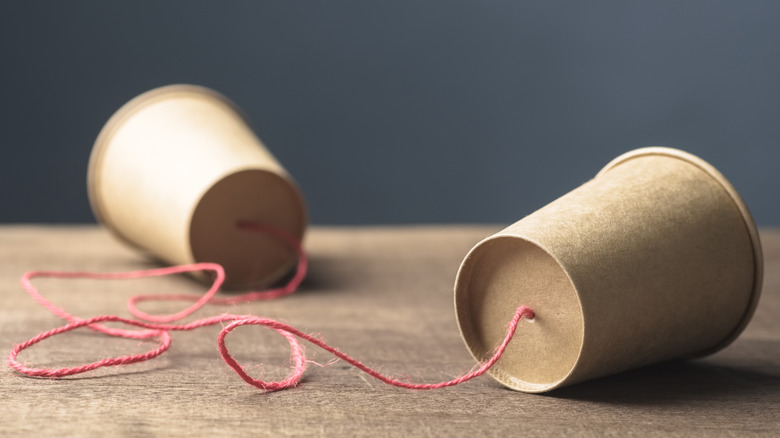How Does A Paper Cup Phone Work?
A simple paper cup phone works by transmitting sound vibrations along a tightly pulled string. The bottom of each cup serves as a combination "microphone" and "speaker," picking up sound vibrations on one and and reproducing the sound at the other. The phone is easy to make from inexpensive materials you can find around your home or buy at a grocery or hardware store, and teaches basic ideas about the science of sound and vibrations.
Making a paper cup phone
A paper cup phone requires two cups, a length of inelastic string, thread or fishing line, two paper clips, and a pencil or sewing needle. To create a paper cup phone, poke a hole in the bottom of each of the cups with the pencil or sewing needle and thread each end of the string through each hole. Tie each end of the string to a paper clip to prevent the string from detaching from the cups. Pull the string taut and have one person speak into one of the cups while you listen through the other. The cups can be used to communicate over distances of up to 100 feet.
Sound transmission
The paper cup phone is a popular science experiment due to how well it illustrates the mechanics of sound transmission. Sound requires a source to vibrate at an audible frequency (generally between 20 Hz and 20 kHz). These vibrations travel through any solid, liquid, or gaseous medium as longitudinal waves. Though sound waves can travel through air, solid and liquid mediums transmit sound more effectively, due to their greater density.
Speaking into the cup transmits the sound of the speaker's voice into the bottom of the cup. The bottom of the cup acts as a diaphragm and vibrates with the sound of the speaker's voice. As the bottom of the cup vibrates, it transmits the vibrations into the taut string. The sound travels along the string as a longitudinal wave and ultimately vibrates the bottom of the receiving cup. The cup transmits the sound into the air around the listener's ear, allowing them to hear the speaker. Because the sound travels through solid mediums — the cup and the string — it travels more effectively than through air, allowing the users to communicate across large distances with volumes that would be inaudible if spoken through air.
Effective cup phones
You must pull the string taut in order for the phone to work. Longitudinal waves travel through a medium by a process of compression and rarefaction, which in this case alters the tension of the string. If the string is loose, the alterations in tension won't vibrate the listener's cup. Similarly, elastic string won't work properly, because the wave will just stretch the string without vibrating the listener's cup.
Don't let the string come into contact with any other objects, as this will weaken the signal on the receiving end.
